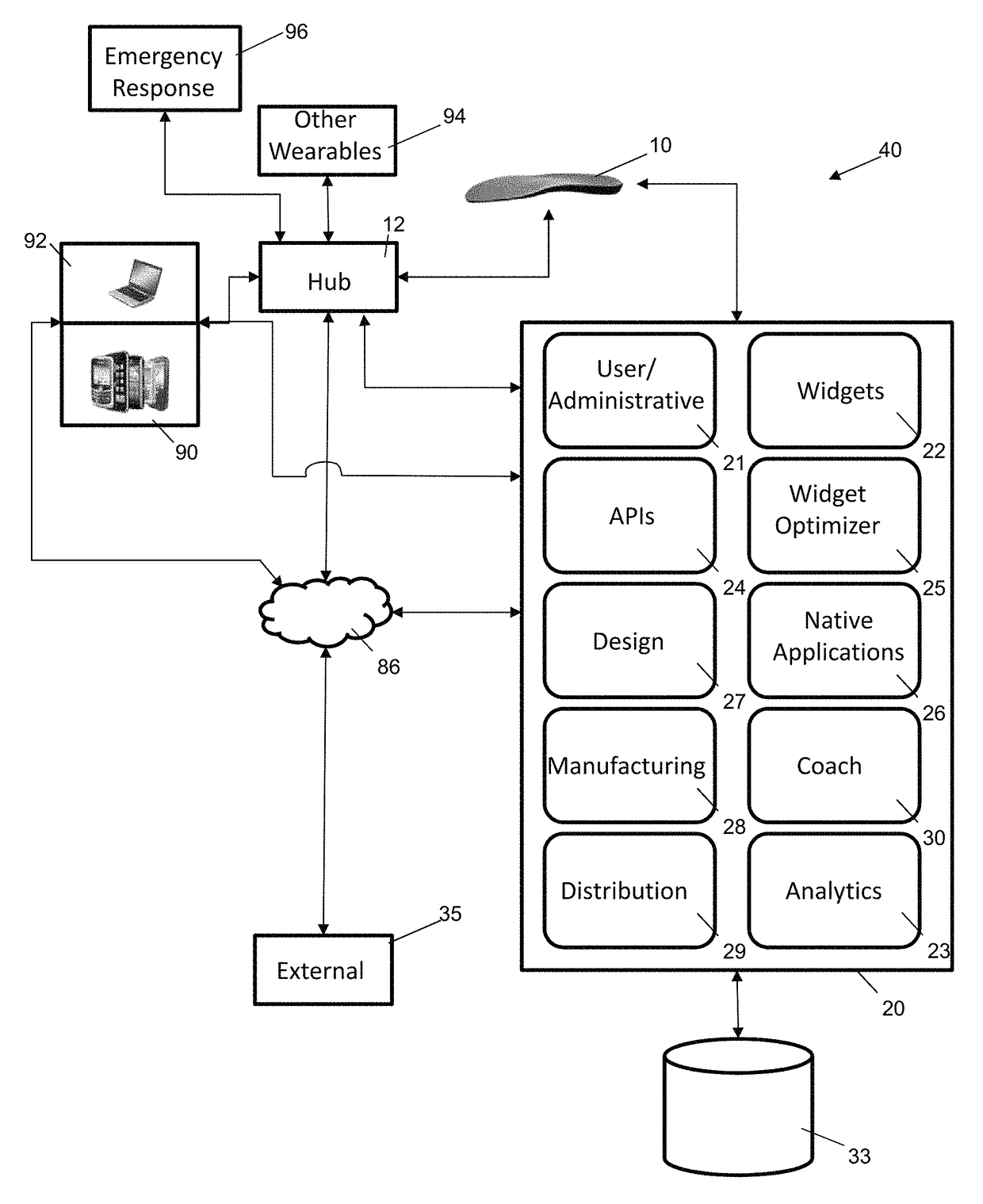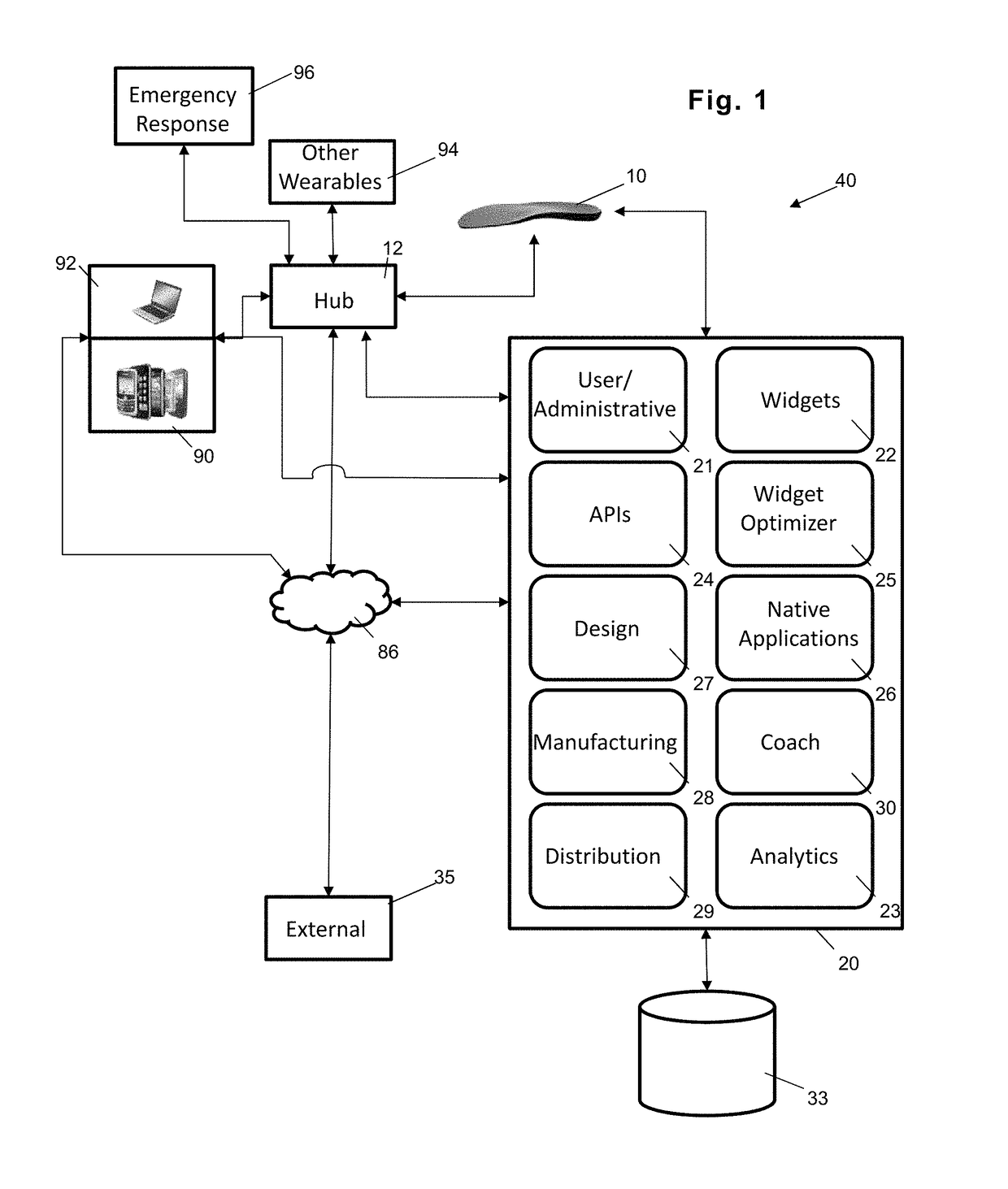System, method and device for designing, manufacturing, and monitoring custom human-interfacing devices
a human-interfacing device and system-based technology, applied in the field of human-interfacing devices, can solve the problems of requiring a time-consuming, complex and costly process, design process that does not effectively address the free or desired motion of the human body, and create unnecessary and unproductive dependency, so as to improve accessibility, improve the quality of their engagement, and increase the speed and accuracy of their diagnostics.
- Summary
- Abstract
- Description
- Claims
- Application Information
AI Technical Summary
Benefits of technology
Problems solved by technology
Method used
Image
Examples
Embodiment Construction
[0061]As depicted in FIGS. 1 through 19, embodiments of the present invention provide a system 40 including a human interfacing device (HID) 10 communicatively coupled to a hub 12 and a remote central server 20. As illustrated in FIG. 1, the central server 20 can comprise at least one processor, memory and programming operable to direct the processor to perform various functions, including administrative component 21 for managing user interactions, including registration, requests and feedback, widget component 22 for offering functional widgets, analytics component 23 for performing analytics, API component 24 for offering various APIs, widget optimizer component 25 for offering customization and optimization functions for various widgets made available through widget component 22, native device and web applications 26, design component 27 for generating HID designs, manufacturing component 28 for instructing the manufacturing of various HID designs, including managing additive and...
PUM
 Login to View More
Login to View More Abstract
Description
Claims
Application Information
 Login to View More
Login to View More - R&D
- Intellectual Property
- Life Sciences
- Materials
- Tech Scout
- Unparalleled Data Quality
- Higher Quality Content
- 60% Fewer Hallucinations
Browse by: Latest US Patents, China's latest patents, Technical Efficacy Thesaurus, Application Domain, Technology Topic, Popular Technical Reports.
© 2025 PatSnap. All rights reserved.Legal|Privacy policy|Modern Slavery Act Transparency Statement|Sitemap|About US| Contact US: help@patsnap.com



